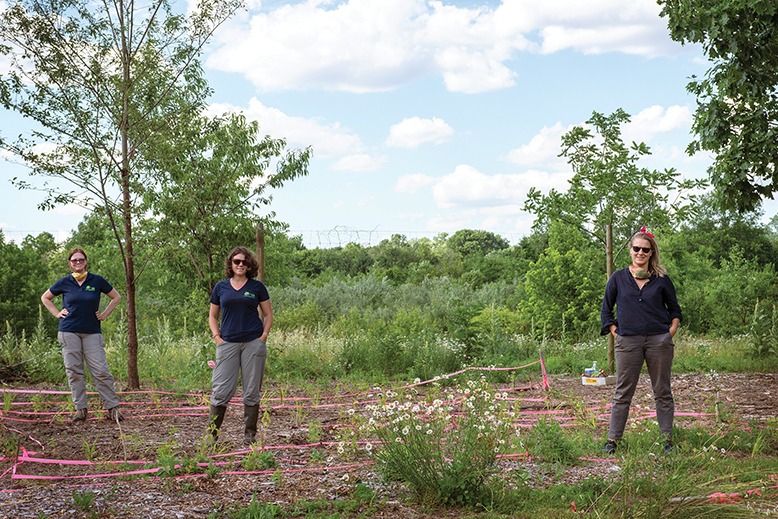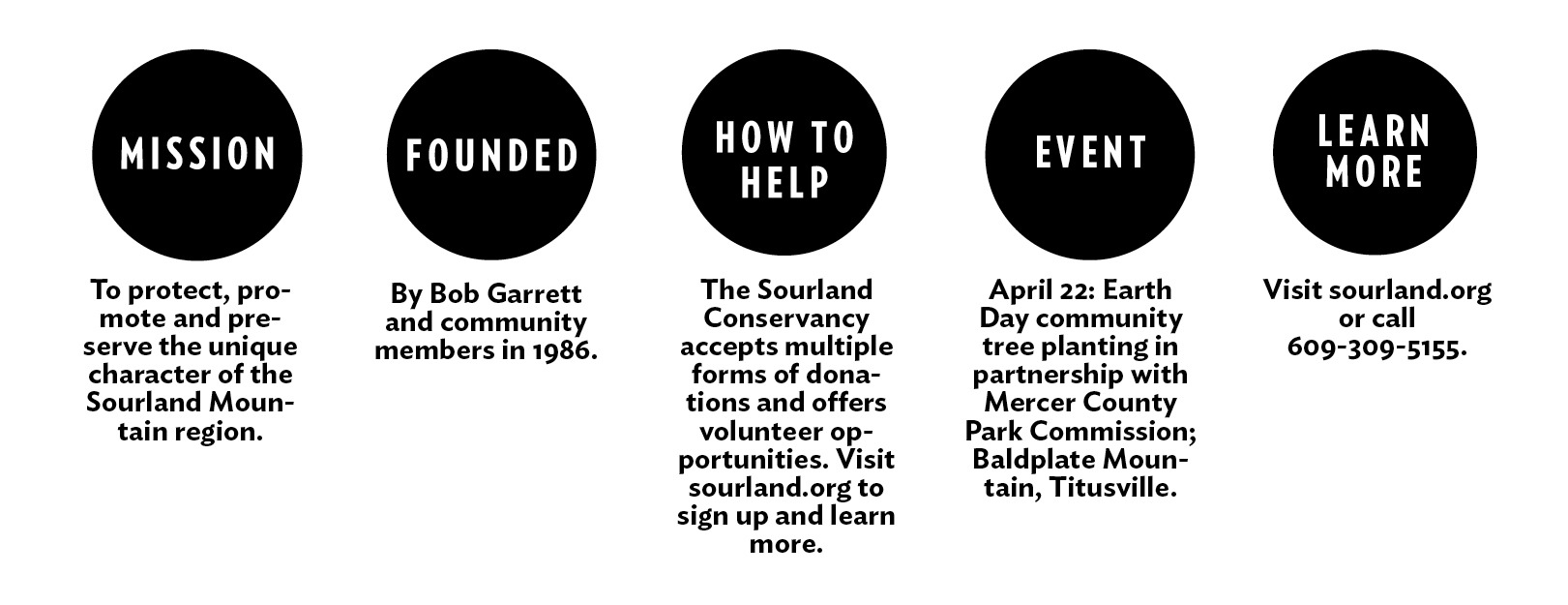
From left, the Sourland Conservancy’s Laurie Cleveland, Carolyn Klaube and Kariina Rand work to restore native plants in the Sourland Mountain region. Courtesy of Heather Raub
Sourland Conservancy began in the 1980s with community members seated around a kitchen table. Development had started to boom within the Sourland Mountain region, stretching through Somerset, Hunterdon and Mercer counties. This growth raised concerns about the area’s ecological future. The organization, founded by Bob Garrett, is dedicated to protecting and preserving the region’s 90 square miles of forest, wetlands and grasslands.
For more than three decades, the Sourland Conservancy has acted as an advocate for the land, offering programs to educate the community about the history and ecology of the region, as well as hands-on initiatives to help maintain a healthy ecosystem. “There are a lot of people who live [in the Sourlands] that don’t understand that they are a part of this bigger thing, this really important place,” says executive director Laurie Cleveland.
Currently, the biggest threat to the region is the emerald ash borer, an invasive bug, originally from Asia, that wreaks havoc on local ash trees. It’s predicted to take out roughly 20 percent of the area’s trees.
[RELATED: Meet the Handful of Locals Rescuing Our State’s Threatened Trees]
Last year, in an effort to revitalize the Sourlands’ trees, the Conservancy launched a program that provides tree-planting kits to residents. Each kit includes a sapling and deer fencing to protect it. For novice planters, the nonprofit created videos with instructions on how to best plant the trees. The Conservancy sells the kits to interested residents or donates them to those experiencing financial hardship. “What we’re trying to do is give homeowners every tool that we possibly can to help them plant native and keep the forest functioning,” says Cleveland, who has 30 affected trees on her Hopewell Township property.
Native plants—meaning specimens that have originated and adapted to thrive in an environment—help maintain the natural order in an ecosystem, explains Carolyn Klaube, the Conservancy’s stewardship coordinator. “The rhythms of the life cycles between native plants and native animals are aligned in such a beautiful way,” she says. “Planting native plants is a simple way that you can make a lasting impact on your local ecosystem.”
The tree-kit program resulted in 800 plantings last year; it will resume in the fall. For Earth Day, the Conservancy will host an event celebrating its 35th anniversary, where staff and volunteers will plant 160 native trees and shrubs to replace 79 ash trees that have died.
“So much wildlife relies on this forest,” says Cleveland. “And because there are so many humans here, we need to engage every resident to embrace their place in the ecosystem and help enrich the habitat in their own backyard.”




